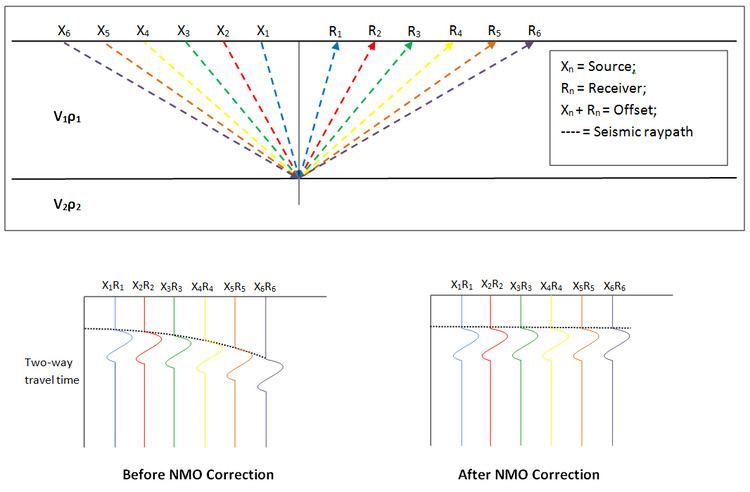 | ||
In reflection seismology, normal moveout (NMO) describes the effect that the distance between a seismic source and a receiver (the offset) has on the arrival time of a reflection in the form of an increase of time with offset. The relationship between arrival time and offset is hyperbolic and it is the principal criterion that a geophysicist uses to decide whether an event is a reflection or not. It is distinguished from dip moveout (DMO), the systematic change in arrival time due to a dipping layer.
The normal moveout depends on complex combination of factors including the velocity above the reflector, offset, dip of the reflector and the source receiver azimuth in relation to the dip of the reflector. For a flat, horizontal reflector, the traveltime equation is:
where x = offset; v = velocity of the medium above the reflecting interface;
